The world has changed. Should the Peace Corps?
Thanks for the ‘heads up’ from Michael Varga (Chad 1977-79)
The world has changed. Should the Peace Corps?
Youth participate in a camp organized by the Peace Corps in Ghana in 2015 designed to empower girls and teach boys how to respect others.
September 22, 2021
- By Ryan Lenora Brown Staff writer
- Nick Roll Correspondent
The Peace Corps took Patricia Smith, like nearly a quarter-million volunteers before her, far from home.
Every morning, she rose early to walk the mile to her job, dodging cars on roads without sidewalks to make it to the public health site where she volunteered. The sun came up earlier in her host community than it did at home in Oregon, which required some adjustments. And sometimes, the culture and rhythms of life in her new environment felt very different from home. But none of that bothered Ms. Smith. In fact, it’s why she joined the Peace Corps to begin with.
The part she wasn’t expecting when she imagined her life of Peace Corps service, though, is where she was most recently assigned – a cavernous convention center in a strip-mall section of New Jersey. Up until August, Ms. Smith spent her days greeting people arriving for COVID-19 vaccinations. She originally worked in Cambodia, but was evacuated, along with every other Peace Corps volunteer in the world, in March 2020.
Peace Corps volunteer Patricia Smith, who, like all the program’s workers, was brought home from overseas after the pandemic struck, recently did service work at a vaccine site in Edison, New Jersey.
Now, she is part of a unique moment in the Peace Corps’ 60-year history. Since the agency was founded in 1961, it has never been without its legions abroad. More than 150 volunteers like Ms. Smith worked in the U.S. on COVID-19 vaccination programs over the summer, and about 250 have provided virtual support for programs in 27 of the agency’s host countries. But for all intents and purposes, the organization is at a standstill – and a crossroads.
To the organization’s supporters, the Peace Corps has long been a beacon of American idealism, a way for young Americans to see the world and provide assistance to people in the world’s poorest corners while they do it.
To its detractors, meanwhile, the Peace Corps is a dinosaur, a Cold War-era diplomacy project that has outlived its usefulness. The world is a very different place from what it was in 1961, they argue, and yet the U.S. is still sending American college graduates out to teach African farmers how to farm. It’s “really little more than an extended, government-sponsored semester-abroad program,” wrote one critic in 2010. Still others say that the U.S. shouldn’t be focusing its resources abroad at all. They see the Peace Corps as a wasted budget line.
Volunteer Teri Lutz of Grand Junction, Colorado, teaches English at a girls’ high school in Jalalabad, Afghanistan, in 1973.
These debates have become particularly urgent now, as the Peace Corps prepares for the biggest reset of its life – returning nearly 7,000 volunteers to “the field” – which it hopes to begin in early 2022. But the world these new Peace Corps volunteers walk into will not be the same one that volunteers like Ms. Smith walked out of last year. Internationally, the pandemic has reshaped the globe, shifting how countries think about health, development, and the interconnectedness of people. And domestically, the Black Lives Matter movement has called for Americans to examine their own role in maintaining a world stratified by race and privilege.
As the Peace Corps cracks open its shutters again, many are asking hard questions. This is an organization meant to share American values with the world – but whose values are they? In a post-pandemic world, what does the Peace Corps want to be?
One morning in early March 2020, Calvin Yahn hopped onto his bicycle and began the 45-mile ride into town.
For nearly two years he’d been an agricultural volunteer for the Peace Corps in Kasamba, a small farming community in rural Zambia. Mostly, his days were filled with starting a beekeeping project, attending village meetings, and helping teachers at a nearby school with AIDS and malaria workshops. He loved the work, but his community was remote, and town, a place called Mkushi, was where he had to go when he needed an internet connection or wanted to chat in rapid-fire English with one of his fellow volunteers in the area.
Locals lift a water tank into position as part of a Peace Corps project in Vanuatu, a chain of islands in the South Pacific, in 2013
Recently, though, the outside world had started to press in. A dangerous virus that had been discovered three months earlier in China was quickly spreading around the world. Countries, including the U.S., were contemplating wide-scale shutdowns of schools and businesses.
In rural Zambia, all of that still felt unfathomably far away. But that morning, when Mr. Yahn reached the paved road to town, he stopped to check his phone. He found an email from the Peace Corps. Mr. Yahn, along with all 7,000 of the organization’s global volunteers, would be evacuated immediately. Three days later, he was on a flight back to the U.S. His service was over.
Since the first fresh-faced cohort of Peace Corps volunteers left for Ghana and Tanzania in 1961, the world has never been without the organization’s earnest (mostly) young do-gooders, fanned out across some of the world’s poorest communities to try to make life there a little better. The program has always been an unusual hybrid – part development aid, part cultural exchange, part gentle diplomacy. Volunteers, in other words, aren’t just there to help teach English or organize local clinics. They’re also meant to share America with the world and create a coterie of Americans in sync with the needs of faraway places.
“You’re walking alongside people [you’re working for] in a very fundamental way,” says Carol Spahn, who served in Romania as a business development volunteer in the mid-1990s, just after the fall of communism, and is now the Peace Corps acting director. “It takes a long time to get to the point where you can speak the language and relate. I think that’s really profound.”
“[The Peace Corps] is designed to permit our people to exercise more fully their responsibilities in the great common cause of world development.” – John F. Kennedy, on the day he signed an executive order establishing the Peace Corps in 1961
That model goes back to the organization’s Cold War founding. At 2 a.m. one October night in 1960, presidential candidate John F. Kennedy stood in front of 10,000 students at the University of Michigan in Ann Arbor and asked the buzzing crowd, “How many of you who are going to be doctors are willing to spend your days in Ghana? Technicians or engineers, how many of you are willing to work in the foreign service and spend your lives traveling around the world?” He paused. “On your willingness to do that … to contribute part of your life to this country, I think will depend the answer whether a free society can compete.”
By free society, of course, he meant a noncommunist one, and the program was in many ways a response to the headlines of young people with specialized skills departing the Soviet Union and Cuba to serve in the developing world.
America needed its answer to that. And when Kennedy became president, the Peace Corps was it. The organization was exactly the kind of feel-good diplomacy that Cold War America needed abroad.
But its aims often also moved in lockstep with U.S. foreign policy. In the 1980s, the world’s largest Peace Corps delegation was in Honduras, a reward for letting the Reagan administration set up a base there to attack the Sandinista government in neighboring Nicaragua. Volunteers rushed into Eastern Europe after the fall of communism. In early 2020, congressional Republicans successfully petitioned to have the Peace Corps’ China program shut down because the country was “an adversary of the United States.”
Laurel Joncas-Schronce, a Peace Corps health volunteer, works with people living with HIV in Tanzania in 2018.
Still, wherever the organization went, it looked wholly unlike other kinds of aid America was exporting. Instead of bureaucrats sitting in air-conditioned offices cloistered in capital cities, the face of the Peace Corps was a Birkenstocks-wearing 20-something earnestly running after-school theater programs and raising funds for new wells.
“Anyone who’s worked in development can see that this is a different approach,” says Mamadou Diaw, who worked for the Peace Corps in Senegal for 27 years. “Most development is very top down, very bureaucratic, and only a small amount [of aid] actually gets to people on the ground. The Peace Corps is the opposite.”
But the model of sending American young people without specific expertise overseas to do development work has always drawn skeptics. Peace Corps volunteers live in the communities where they work and survive on a budget similar to that of locals. They are given a few brief months of language training, but often arrive with shaky communication skills and surface-level knowledge of local culture.
“There were many who criticized the naive nature of the Peace Corps from its founding,” says Alan Price, director of the John F. Kennedy Library and Museum in Boston and former associate director of management at the Peace Corps. “How can people do great things with few resources in complicated places?”
But for the Peace Corps, that’s partly the point. In addition to doing development work, it exists to teach Americans about the world – and the world about Americans.
Students being taught by a Peace Corps volunteer in Indonesia take a break from their studies to snap selfies in 2015.
“My attitudes changed towards foreigners because you could see that these were people who came from somewhere well to do, and they were prepared to be among us, mix with us, work with us,” said Anastasia Msosa, the first female chief justice of Malawi, in a 2015 interview with the Peace Corps. She grew up in a rural part of the country, and says the Peace Corps volunteer at her school “helped me to have dreams” of a world beyond her small town.
At the same time, being embedded in communities forces Peace Corps volunteers to go deep on the kind of unsexy, pragmatic aid projects that often struggle to attract outside support.
In Kédougou, Senegal, for instance, more than 400 miles away from the capital, Dakar, Soulayeman Ngom is patiently awaiting the return of Peace Corps volunteers. The remote region lacks many amenities. Until recently, the national highway in the area was a dirt road, which volunteers and Senegalese alike had to brave in overnight buses and crammed station wagons. Few people have access to a doctor.
In an effort to expand health care in the region, Mr. Ngom, a nurse, has worked with two Peace Corps volunteers to show local teachers how to administer malaria tests at schools. Dodging rainstorms and oppressive heat, they helped local health and education officials recruit candidates for training, prepare grants, and hammer out lesson plans. Countless phone calls, WhatsApp messages, and bicycle commutes later, teachers from 33 schools assembled at Mr. Ngom’s clinic and two others for the workshops.
Local youth work with Peace Corps volunteers on a water project in Senegal in 2009.
As a result, more than 1,000 new cases of malaria were detected and quickly treated during the 2018-19 school year, in a region where most cases go undiagnosed. Mr. Ngom says it “absolutely” helped lower the mortality rate.
Yet not everyone sees the Peace Corps’ presence in their communities so positively. Cleiton Fernando Pinto Celestino, a development studies lecturer who has seen many Peace Corps volunteers stream through his hometown of the Island of Mozambique, off the country’s northern coast, says he has long been struck by how little volunteers know about a place when they arrive.
He has watched workers struggle to interact in basic Portuguese and local languages, and says he felt many simply gave up and did little service.
“I think it’s necessary to send people who at least know something about where they’re going. They need the skills for that specific environment,” he says. Instead, the Peace Corps seemed to be offloading “young people who come with their parents’ intentions – they just want to help Africans.” That kind of thinking troubled volunteers Lindsay Allen and Margaret Haskopoulos during their service in Mozambique. What are we doing here? they often wondered. And whom are we helping?
Darlene Moreno, a Peace Corps worker in Armenia, teaches students English in 2016.
At the same time, the other side of the Peace Corps – its focus on sharing America with the world – began to concern them, too. When the pair were evacuated in March 2020, they decided to start an Instagram page called Decolonizing Peace Corps, with a radical goal – to shut the organization down.
“The Peace Corps asked us to do culture days, but they insisted we didn’t speak about politics,” says Madorah Sesay, a former Peace Corps volunteer in Namibia who was also part of the organization’s leadership. “So I could share Christmas or Valentine’s Day, but not the experience of what it’s like to be Black in America.”
To make the world more equitable, they argued, the U.S. needed to stop sending Americans to “help” the developing world.
The page quickly attracted a following – and considerable controversy – among other Peace Corps volunteers. But it gained momentum outside the organization, too.
On May 25, 2020, about two months after the Peace Corps’ mass evacuation, Derek Chauvin and three other Minneapolis police officers confronted a Black man named George Floyd outside a convenience store after a store clerk accused him of passing a $20 counterfeit bill. At one point during the arrest, two officers wrestled Mr. Floyd to the ground, and Mr. Chauvin, who is white, pinned his knee on Mr. Floyd’s neck until he stopped breathing.
The murder touched off a wave of protests across the U.S. Black Lives Matter activists demanded a reckoning around race in institutions across society, from police to governments to private companies.
Volunteer Jacob Slusser shows two young boys how to plant trees and reforest land in Los Asientos, Panama, in 2011.
The Peace Corps was not spared. Grassroots social media groups began circulating petitions, demanding to know what the organization intended to do differently going forward. As online conversations spread, they sometimes got heated. What was a life-changing experience for some was a sham to others – a bunch of well-meaning but inexperienced volunteers in far-off lands.
In response, the National Peace Corps Association (NPCA), a group led by ex-volunteers that acts as a nonprofit and lobbying group in Washington, began a series of town halls, where it gathered former volunteers virtually to discuss the organization’s future.
The conversations were at times uncomfortable. Reexamining the program meant forcing people to ask if their life-defining experience did any good for the world.
Marieme Foote, who participated in the meetings, was following in her father’s footsteps when she arrived in Benin in 2018. Her dad had been a volunteer in Ethiopia in the 1970s, when Peace Corps service “was like this radical, cool concept,” she says – especially, at the time, for a Black man.
Listening to the passionate town hall debates on Zoom, Ms. Foote was brought back to her time in Benin, huddled around a laptop with her work partner, translating portions of textbooks and videos into local languages so residents could learn new agricultural techniques. She was also brought back to a program that she found slow to catch up to a diverse, changing America.
A volunteer exercises with students in Nicaragua in 2013.
“You have more people joining the Peace Corps that never thought in the past that the Peace Corps was a possibility for them,” for both racial and economic reasons, she says. “A lot of the issues that volunteers have in the U.S., we carry that abroad with us – so how do we tackle issues of discrimination and all that stuff when we travel abroad?”
Participants aired other issues at the town halls, including stories of volunteers arriving in villages thinking they were saviors – there to teach but not to learn. To Ms. Foote, though, these problems are solvable. The question for her is, “How do we make Peace Corps this radical, cool thing in terms of interacting with people and working with people?”
In November, the NPCA put out a report, “Peace Corps Connect to the Future,” that said a significant majority of former volunteers wanted the organization to continue, but also that it was ripe for reform. It called for combating systemic discrimination, recruiting diverse volunteers, and putting greater emphasis on cultural exchanges. It also suggested the U.S. could “benefit greatly from partnerships with volunteers from countries where the Peace Corps is currently operating,” and encouraged exploring a “reverse Peace Corps,” in which foreigners come to the U.S. to do volunteer work.
“I would say many volunteers go abroad thinking they’re going to save the world, and/or thinking they’re there to help others become like us or become whatever ‘developed’ is,” says Glenn Blumhorst, president of the NPCA, based on conversations he had at the town halls. “I think the way Peace Corps programs in many ways were designed was not always in the right partnership approach that there needed to be. And I think that’s what a lot of volunteers saw.”
A Peace Corps volunteer works on a farm in Cambodia in 2014.
Yet the most existential threats to the organization in recent years have not come from left-wing critics or starry-eyed reformers from within, but from skeptics on the outside – notably congressional Republicans.
In June 2019, for instance, then-Rep. Mark Walker of North Carolina proposed a measure that would have slashed foreign aid, including all funding for the Peace Corps. “I just introduced my amendment to put #AmericaFirst by cutting foreign aid to help fund disaster assistance and recovery,” Mr. Walker said in a tweet, just before the House took up the measure. It was defeated in a bipartisan vote, but 110 Republicans ended up supporting the measure.
“If you look back historically on the Peace Corps, it’s not the first time it’s been threatened,” says Mr. Blumhorst. The Nixon years weren’t friendly. At other times the Peace Corps was sidelined for other priorities, he says. Still, the inward, “America First” bent of the Trump years, with its recurring threats to the Peace Corps budget, represented something new, and the former president’s views on foreign aid remain strong among Republicans.
“There could be a perfect storm of conditions that could seriously threaten the Peace Corps: an administration that wasn’t friendly to taking our values abroad, for example, and more of an isolationist agenda,” Mr. Blumhorst says.
Still, one of the organization’s biggest challenges going forward may not be funding, but finding its place in a world fundamentally different from before March 2020.
A Peace Corps volunteer teaches two boys about agricultural practices in Senegal in 2009.
“It’s a profound moment in global history – never before has every country in the world been impacted at the same time by a virus,” says Ms. Spahn, the acting Peace Corps director. “The Peace Corps is about connectedness. It’s about world peace and friendship. All of that has been put on hold and challenged at the community and national and international level.”
The organization says it’s working toward sending volunteers out again in early 2022, if the pandemic doesn’t delay that timeline further. In the meantime, no matter what the organization’s future, many volunteers have found that working overseas has clarified their path forward personally.
Earvin Casciano was in his first year of Peace Corps service in Fiji when another volunteer said she thought he’d make a great social worker. It was a job he’d never considered, but now, as he reflected on it, the idea seemed perfect. He loved helping people fine-tune their lives.
“A lot of people take the Peace Corps as an opportunity to party and travel around,” he says. But for those who are serious about the work, it can be a singular formative experience.
Just before he was spirited home in March 2020, Mr. Casciano helped finish a cyclone evacuation center in his town’s community hall. When major storms hit, residents often struggled to come up with the bus fare to travel to the nearest shelter. Instead, they stayed home.
So Mr. Casciano applied for a small grant from the Peace Corps to outfit the community center with stormproof windows, and a kitchen and bathroom for overnight stays. Now, residents could take cover there.
Bottom of Form
It wasn’t much, as far as development projects go. Not a bold new idea. Not a flashy execution. Just a small corner of a tiny island thousands of miles from Mr. Casciano’s New Jersey hometown, made a little better by his presence.
Nick Roll, who contributed to this report, was a Peace Corps volunteer in Senegal from 2018 to 2020.

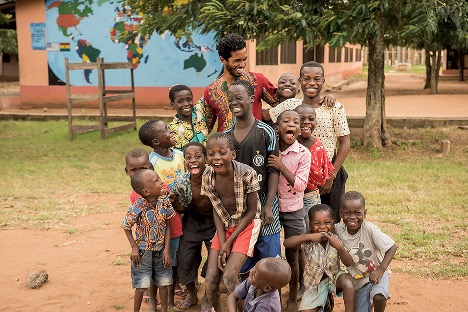
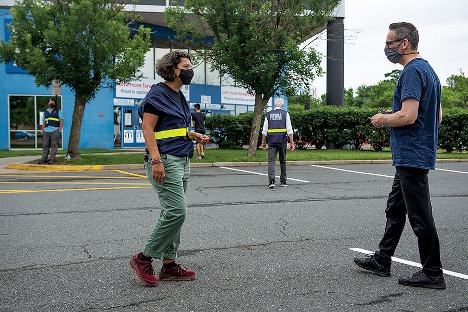
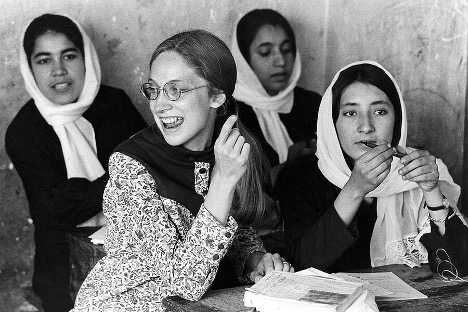

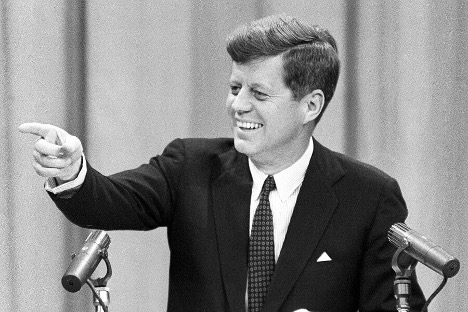
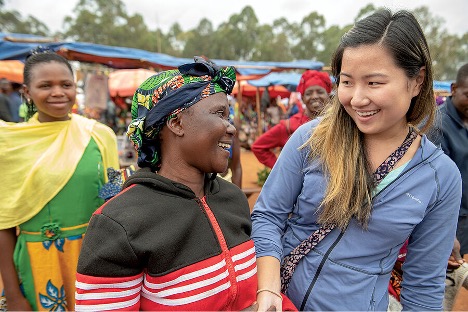
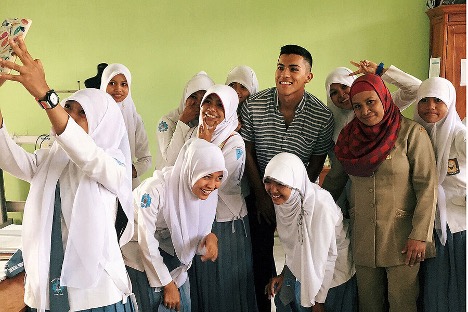
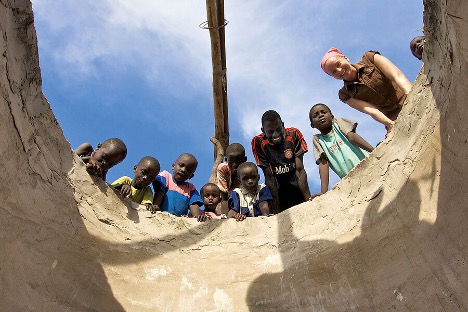
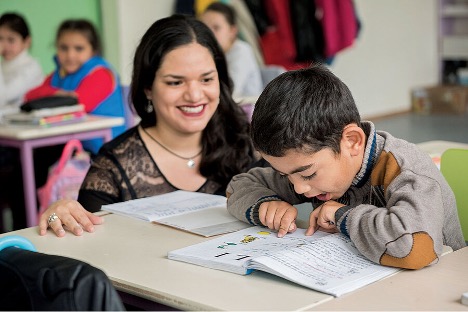
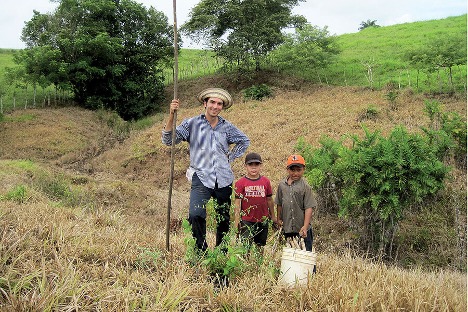
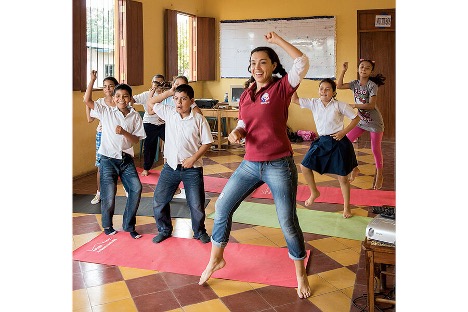
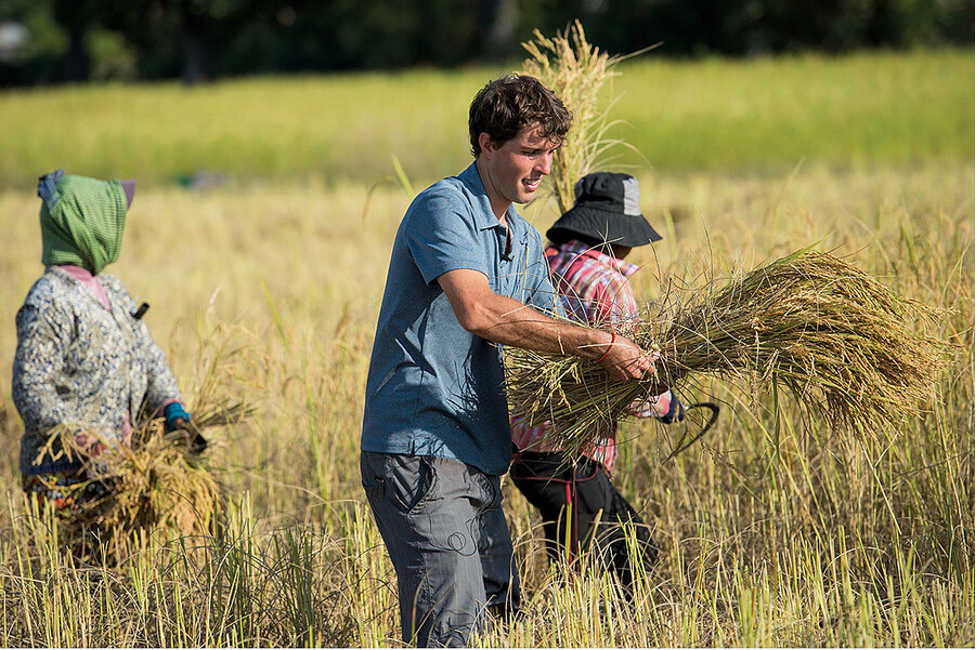
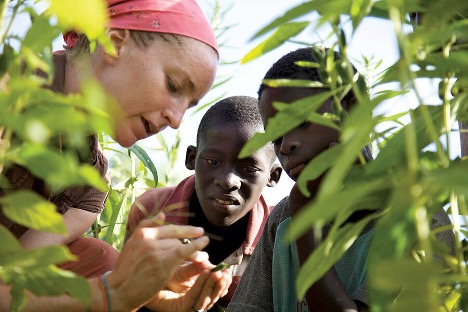
Great piece that can truly justify celebrating our 60th year in existence. Thank you!
A nice, objective summary with a great prescription change—much derived from NPCA. Yes….the Peace Corps continues to have a role to play, not just in developing countries, but in the U.S. when volunteers return home.
The article brings up some interesting points and there is a need for opening PC to those who have had to struggle financially or otherwise to get through school, those who already have skills that are needed in other countries, those who are willing to learn from the country where they are assigned. In the past volunteers were more isolated from home, they didn’t go home at all for the full two years. It was an opportunity to be totally immersed in the culture and community where they served. There is room for both a physical presence and a virtual one where that is possible. The Peace Corps is still a vehicle for bringing a new and needed perspective about other places in the world, home to the USA. The article gives us much to think about.
i would like to make an important disclaimer. I thank Nick Roll for his contribution. I stress that we are not related and I have never met Mr. Roll. My opinion is mine alone and many if not all may not agree with me.
I believe the federal program, Peace Corps, should be suspended for the following reasons:
The people asking if the Peace Corps should change should have been host country people. But, no Peace Corps administration has consistently done that, and so has no comprehensive record of long term projects or host country.
Volunteers have been “missionaries” from the most successful country the world has seen. However, we did not realize that the fossil fuel technology which “fueled” our great economic and political achievements was high gain/high risk. We benefited from the gain and now, with the rest of the world, are suffering the consequences. We polluted the earth, heated up the oceans to dangerous levels and buried the world in plastic. This was the culture we introduced in many poor communities. Peace Corps cannot continue until there is data on all that we did and we have some idea of how or if it is possible to remediate damages.
Education has been perhaps the most successful of all Peace Corps projects. So the question to be asked now about these programs are there host country educators who could do these jobs.
There is no one Peace Corps, there have been twelve. Each new Presidential administration appoints the Director and the various Schedule C decision-making employees. They all reflect the agenda of that current Administration. The Five Year Rule means that civil service employees change frequently. The in-house Library and its Librarian was eliminated more than twenty years ago and so there is no institutional memory, or even an attempt at one. This makes it very difficult to do a comprehensive evaluaton of work done by PCVs.
Beginning with the Third Goal, I think the RPCV community is the heart of the Peace Corps ideal. it is no longer necessary to tell Americans about host countries, because the world has come to America. Many people have arrived from the previous host countries and are the best resource. But RPCVs in individuals and in groups have created important projects in host countries, utilizing their networks and access to resources and most importantly, working directly with host country people. All of this has been accomplished with virtual no support from the various Peace Corps administrations. I think this is one reason they have been so successful and will continue to be so.
Again, the history of the Peace Corps has been preserved by the independent efforts of RPCVs
beginning with John Coyne and Marian Haley Beil more than 30 years ago, promoting RPCV writers. The Museum of the Peace Corps Service began with the RPCV group in Oregon decades ago and continues today, as does the Oral History project and the Peace Corps archives at American University, all begun and sustained by great RPCVs.